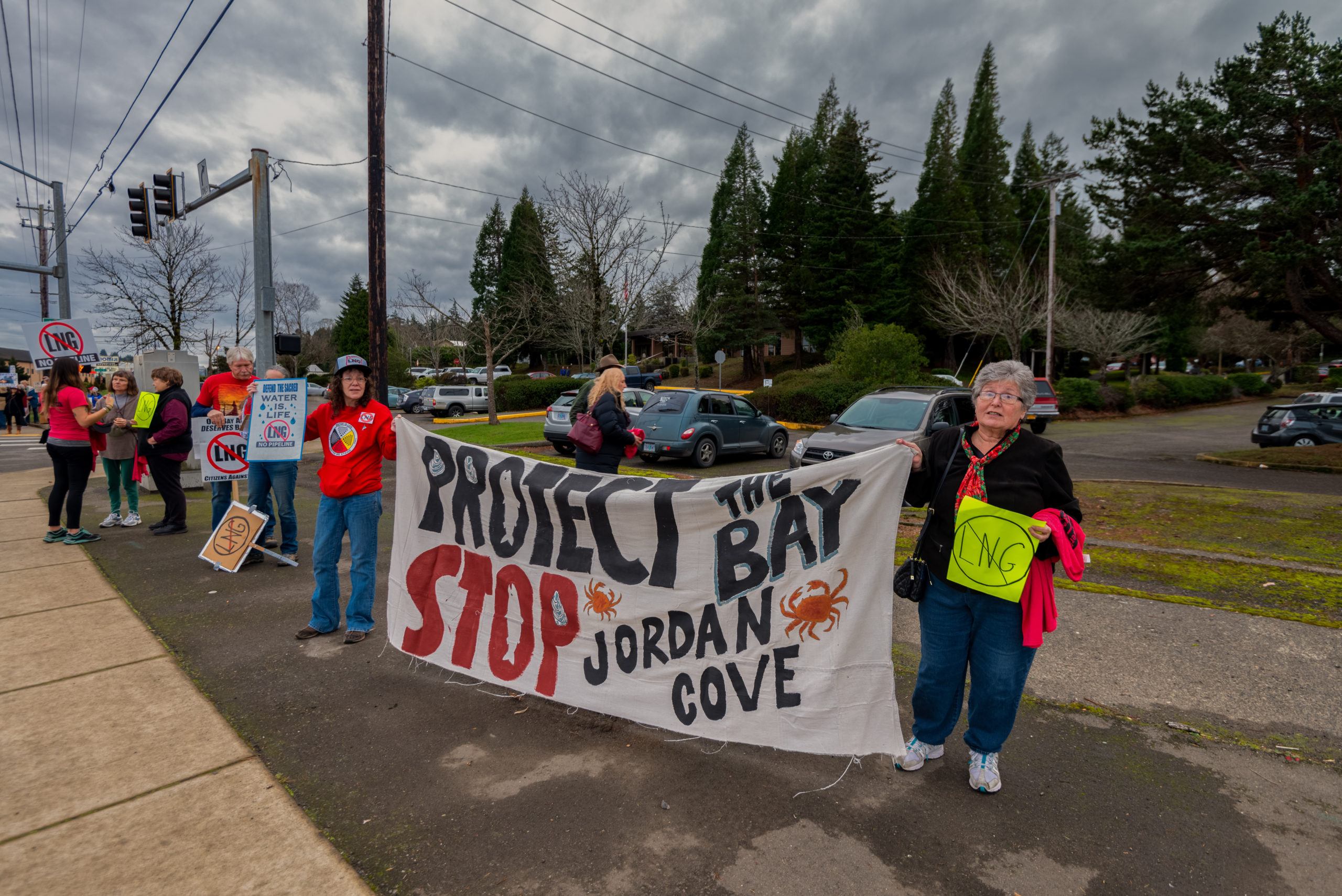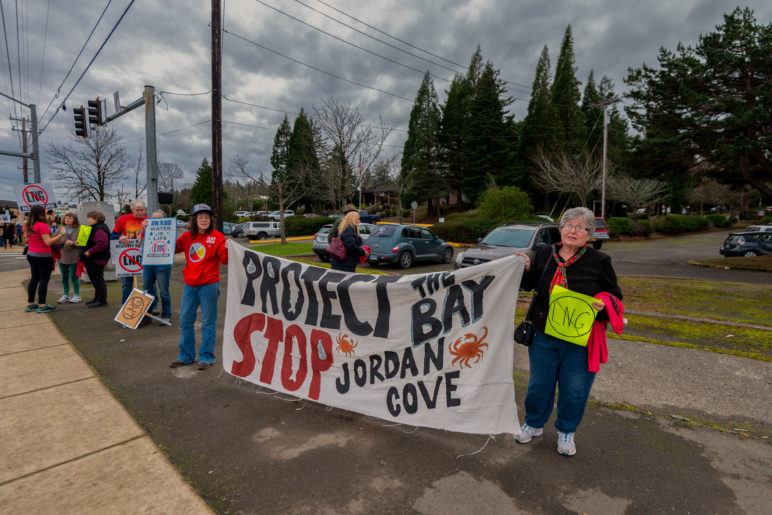January 19, 2021 was one of the brightest days in the history of the Northwest’s opposition to fossil fuels. Yesterday, two major fracked gas projects ran aground, likely never to move again: a methanol refinery in Washington and an LNG facility in Oregon. It was the culmination of years of work by a movement often known as the thin green line.
In Washington, the state’s Department of Ecology denied a key permit for an petrochemical project on the Columbia River at Kalama on the grounds that it would have resulted in staggering volumes of climate pollution. The plan was to build an enormous gas-to-methanol refinery to supply China’s factories with cheap feedstock for making plastics. Along the way, it would have consumed more fracked gas than every power plant in the state combined and increased Washington’s greenhouse gas emissions by nearly five percent. The scheme was cynically marketed as environmentally beneficial by a group of political insiders who had failed previously to build an even larger version of the project in Tacoma. Although Ecology’s denial for the project can be appealed, there is now little reason to believe it can survive the gauntlet of regulatory approval still ahead.
Meanwhile, in Oregon, the zombie-like Jordan Cove LNG project was dealt what is probably its final blow. Killed twice before, the latest incarnation of Jordan Cove would have built a large new gas pipeline over the rugged mountains of southern Oregon to a liquefaction facility and export terminal on the coast at Coos Bay that would have been the single largest source of carbon emissions in the state. After a rejection under the Obama administration, the project backers tried to take advantage of Trump’s blithe support for fossil fuel development. But in an eyebrow-raising decision on Tuesday, the Federal Energy Regulatory Commission unanimously denied a request by the project backer to overturn important permit denials by the state of Oregon. Most analysts believe the project is done for, especially now that it would have to navigate more skeptical federal regulators under the incoming Biden administration.
There’s been good news in Alaska too. The destructive Pebble Mine was recently denied key permits by the US Army Corps of Engineers, while the Trump administration’s callow attempt to auction drilling rights in the Arctic National Wildlife Refuge flopped, yielding little interest from oil companies and netting very little revenue.
Today, Joe Biden will be inaugurated President. Promising to kill the Keystone XL oil pipeline on his first day in office, his administration has signaled it will take seriously the dangerous of climate change. With incoming climate czar John Kerry, the new Biden cabinet appears equipped with the right leadership to tackle the problem despite its damnable complexity and political difficulty. There is now real reason for optimism, however guarded, that 2021 will bring genuine opportunity for climate progress.
The same skills and power that enabled northwesterners to stop ill-conceived new fossil fuel schemes should now be turned to the work of dismantling the dirty energy legacy of the past.

Everyone in the Northwest’s thin green line movement deserves a glass of champagne, a round of applause, and a moment of rest. But only a moment. As the Biden administration takes power, it is time for the movement to reorient. The same skills that enabled northwesterners to stop ill-conceived new fossil fuel schemes should now be turned to the work of dismantling the dirty energy legacy of the past.
In the months ahead, Sightline will outline plans for the region to face squarely the oil and gas infrastructure already in the region. Our challenge is to decommission the Northwest’s fossil fuel industry—replacing it with new systems that are healthier and fairer for the many generations yet to call Cascadia home.











